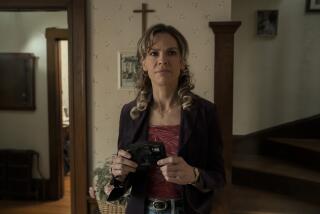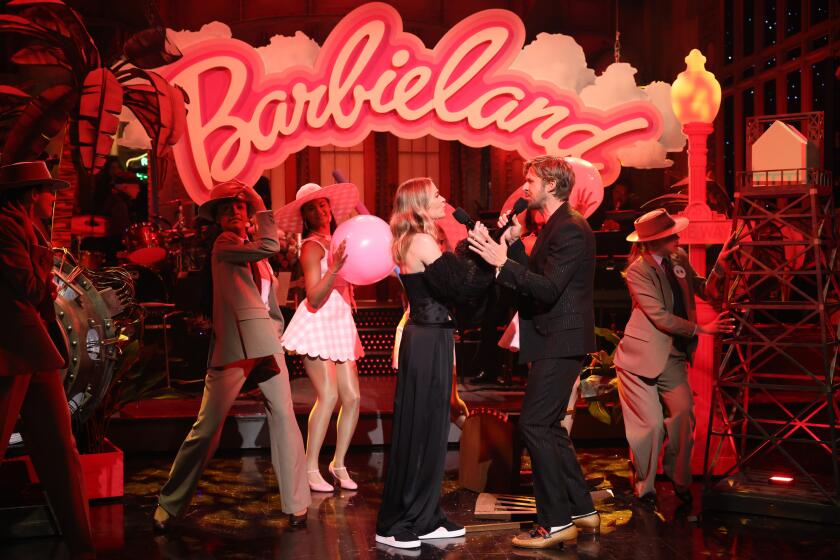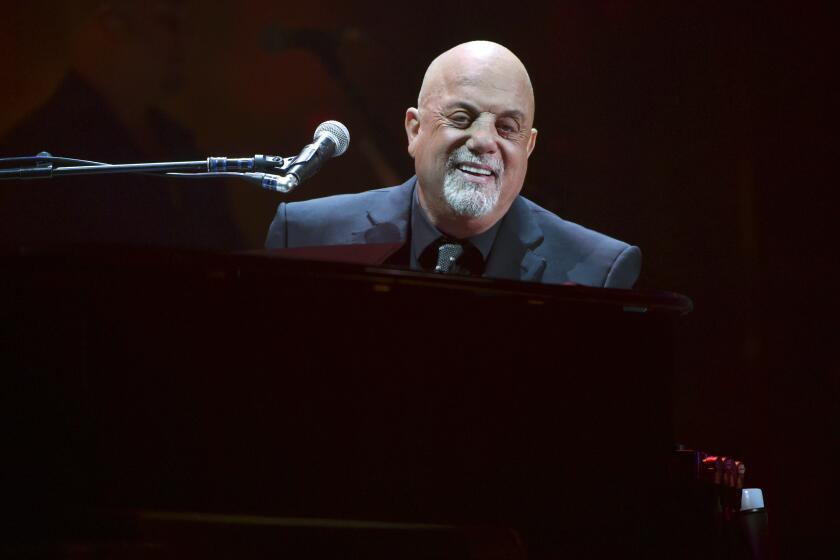‘Juno’ set high box office standard for fest fare
FILM festivals are justifiably infamous for gluttonous parties, craven swag suites and break-the-bank bidding wars. But does having played the festivals actually help sell tickets when the movie finally hits theaters? The makers of two movies opening this week -- “Young@Heart” and “The Visitor” -- pray that the answer is yes.
While some specialized film releases are now supported with $20-million marketing campaigns, most are not. Consequently, an increasing number of independent filmmakers (and even a few major movie studio divisions) are hustling to convert film festival prestige into box office bucks. The alchemy often works brilliantly -- witness last year’s “Juno,” which started its meteoric rise at the Telluride Film Festival -- but it just as easily can leave a movie nearly dead on arrival, the case with “Elizabethtown” and “Marie Antoinette.”
“It’s a calculated risk to take any film to a festival, because you could shoot yourself in the foot,” says Nancy Utley, the chief operating officer of “Young@Heart” distributor Fox Searchlight, which also released “Juno.”
Smaller films usually can’t afford to blitz audiences with pricey TV ads, and festivals remain a relatively low-cost way to snag attention. Without festival buzz, though, arty movies in limited release -- “Young@Heart” and “The Visitor” are opening in just four theaters in New York and Los Angeles -- face long odds, especially when their plots don’t condense into snappy ad copy. So both movies are wearing their glowing festival credentials on their sleeves.
THE poster and Internet ads for “The Visitor” trumpet four of its festival appearances, while newspaper notices for the immigration drama mark no fewer than eight such stopovers: Sundance, Toronto, South by Southwest, AFI Dallas, Philadelphia, Phoenix, Miami and Atlanta (they decided not to tout its trip to Vermont’s Green Mountain Festival).
“With a movie this size, you need every advantage you can get,” says Michael London, who produced “The Visitor.” “So we are using the fact that festivals embraced it as a marketing tool.”
With its lead role played by veteran character actor Richard Jenkins (“Six Feet Under”) and its story involving an economics professor’s relationship with two immigrants squatting in his apartment building, “The Visitor” is far from an easy sell. In peddling its many festival appearances (the film premiered at last year’s Toronto International Film Festival, where nascent distributor Overture Films bought it for more than $1 million), Overture and London hope the festival tally will influence film critics too: If festivals liked it so much, the thinking goes, so should reviewers.
“Critics pay attention [to festivals], and audiences pay attention to critics,” London says. Adds Overture’s marketing chief, Peter Adee: “We have cloaked ourselves in the quality of the festivals.”
In its campaign for “Young@Heart,” a documentary about a band of spirited elderly singers covering pop hits from rockers such as the Ramones and Coldplay, Fox Searchlight is trying to accomplish two things at once: Tell ticket buyers that, while festivals jumped at the film, so too did festival audiences. “We’re selling our festival credentials, and we’re selling the experience you’ll have watching the movie,” Utley says. As part of the effort, the studio has held 188 pre-release screenings across the country.
As one “Young@Heart” trailer boasts, “Experience the film that brought audiences to their feet with spontaneous applause at the Los Angeles Film Festival,” referring to the local festival where Fox Searchlight bought the film last summer for $1.5 million.
Unlike movies that premiere and sell at Sundance and more or less head straight to theaters (think “Little Miss Sunshine”), “Young@Heart” and “The Visitor” stopped at Park City, Utah, months after opening elsewhere. The major studios have started noticing the buzz benefits of such stopovers, and more are steering their films along similar paths.
To build heat for April 18’s “Forgetting Sarah Marshall,” Universal Pictures sent the raunchy romance to last month’s South by Southwest Festival, mirroring the successful strategy it employed a year earlier with another of its Judd Apatow-produced comedies, “Knocked Up.” Universal believes that in “Sarah Marshall’s” quick visit to the Austin, Texas, festival, the studio was able to generate the equivalent attention that two weeks of expensive advertising would generate.
Of course, festival exposure can cut the other way -- often painfully so.
In May 2006, Sony Pictures took Sofia Coppola’s “Marie Antoinette” to the Cannes Film Festival. It cost a fortune to send the film’s cast and filmmakers to the French Riviera, but the real price was middling reviews and scattered boos after its Cannes screenings. “Marie Antoinette” grossed just $16 million domestically and $31.5 million overseas.
The fallout was equally severe a year earlier, when Paramount Pictures took Cameron Crowe’s unfinished “Elizabethtown” to festivals in Venice, Italy; Deauville, France; and Toronto. The director lopped some 20 minutes from the film after its poor festival showings, but the die was cast and the movie bombed. “Elizabethtown” grossed $26.8 million domestically and a meager $23.9 million in foreign markets.
HAVING personally showed “The Visitor” to some half-dozen festivals, writer-director Tom McCarthy understands the benefits. Just the other day, a New York neighbor told McCarthy that he had seen the film at the Sarasota Film Festival. “And he told me the movie played great,” McCarthy says.
“We are not going to have a multimillion-dollar advertising campaign. What we do is build on word of mouth -- having people saying, ‘You have to go see this movie.’ And festivals are the first wave of that conversation.”
More to Read
The biggest entertainment stories
Get our big stories about Hollywood, film, television, music, arts, culture and more right in your inbox as soon as they publish.
You may occasionally receive promotional content from the Los Angeles Times.







